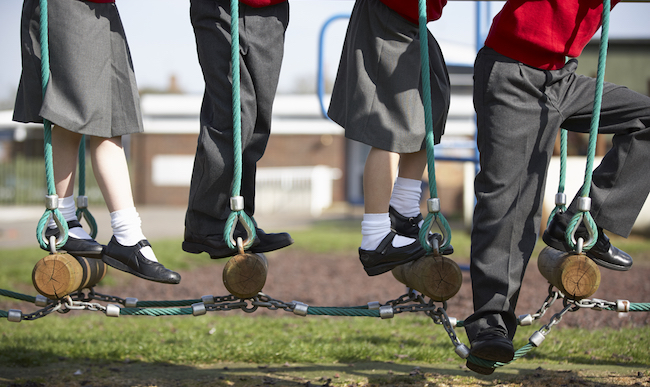
When Target decided to remove gendered labeling from their children’s department, the public went into an outcry, threatening to take their business elsewhere and wringing their hands in dismay over the fact that the world might just end if boys and girls weren’t forced to take on stereotypical gender roles from an early age. “How will boys know that they’re supposed to like trucks?” these people fretted. How will girls know that they should embrace the play kitchen and a shirt with the word “princess” on it? What will happen to the children?
Turns out, nothing. The world continued spinning on its axis and children everywhere continued playing with toys while (hopefully) learning that play doesn’t always have to be immersed in gender. Nor should a boy who likes playing with dolls or a girl who likes to skateboard (traditionally very gendered activities) be bullied for their choices. This sea change has been coming for awhile, with companies like GoldieBlox helping push the needle.
Now, schools across the UK are introducing new rules for their uniforms, working to reduce bullying by allowing kids to express their identity with what they wear (within reason, of course, because these are still uniforms).
According to Mashable, these new uniform policies have been introduced in 80 schools. 40 of those schools are for children who are elementary-aged. And activist judges aren’t forcing these schools into accommodating minorities at the expense of good, decent folks everywhere. It’s the schools themselves taking advantage of a grant that’s specifically meant to reduce the amount of harassment perpetrated against kids who may be the targets of homophobic or transphobic bullying.
A spokesperson for the Department for Education (DfE) told Mashable that the policy changes are not government-mandated, but that the changes have come about following a government grant to make schools more LGBTQ inclusive. “It is up to heads to set the right uniforms for their schools, taking into account parents’ wishes and pupil needs.”
“The money we have allocated is specifically to target homophobic and transphobic bullying in schools to ensure no child has their lives blighted by bullying and can reach their full potential in school,” the spokesperson said.
While each school can choose exactly how to implement new uniform rules, at least one school — Allens Croft in Birmingham — is allowing boys to wear skirts and girls to wear pants if they feel like it. Children aren’t told or encouraged about what to wear. Instead, they’re just presented with more choices. Could this lead to at least one day when all the boys show up in a skirt for a joke? Sure. But maybe that wouldn’t be a problem. Maybe they’d like it? Being young is about trying things and the chance to do so without judgement is a win.
Clearly, no system is perfect and this one won’t end bullying immediately. You don’t have to be a fortune teller to imagine some potential pitfalls. But putting these systems in place to acknowledge and normalize kids who may not fit the gender binary (or who are exploring their gender identity) will eventually lead to further understanding and acceptance. It’s one decision in a bigger cultural shift, but it certainly feels like a worthy one.
One of the main arguments against de-gendering toys and clothes is that kids will become confused and not know which gender to align with. But it’s also important to note that children don’t just discover gender identity once they’re adults. And there’s no conclusive proof that choosing to wear clothes traditionally assigned to a gender opposite their own will automatically make anyone want to embody that gender.
From an interview with Dr. Diane Ehrensaft, a gender identity specialist:
As early as toddler age, you can begin to tell that a child is going against the normative gender grain for the culture. For many children they will show it in toy preference, in movements and actions. So that parents who have a little girl will start to notice that their little girl is wanting to play with the trucks more than the dolls, for example.
But that can’t tell you that the child is transgender. Usually the earliest you can know comes a little bit later when the child has language. Somewhere between 3 and 4, and sometimes between 2 and 3, a [male] child will begin to say “I’m not boy; I’m girl.” So I would say that as early as 2 or 3 you can begin to wonder.
And:
I would say that I think that there is a subgroup of children who, if we listen to them carefully, will tell us, “I know who I am. And if you let me be who I am, I will be a healthy person.
In response to a question of whether children can be “tracked” into a gender identity, or should be encouraged to align with a gender they don’t identify with at an early age, Ehrensaft points out that children treated this way may become “suppressed and depressed” people who will learn to do “what is expected by other people” while hiding who they truly are.
The administration at Allens Croft primary school seems to agree. They hope that the new rules will allow children to feel comfortable and included. “Acceptance,” Head Teacher Paula Weaver said, “is part of the school’s ethos.”






